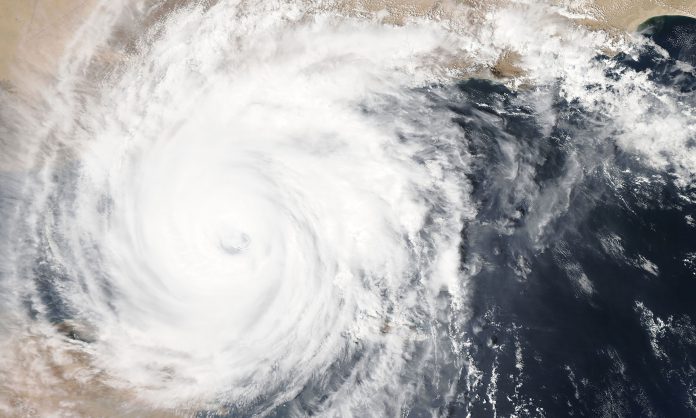The recent Taal volcano eruption has once again shown us that natural disasters can strike all of us with little to no notice. Hence, families should take steps to prepare for any disaster, including natural disasters such as typhoons, floods, earthquakes, and volcanic activity, and even man-made disasters such as power outages, terrorist attacks, or any man-made threats.
These disasters and threats can cause families to either evacuate their homes immediately or may confine them to their homes indefinitely. In both instances with little or no access to basic services — food, electricity, water for an indefinite time. So what can families do to prepare for such adverse situations? Perhaps the best way to mitigate the devastating effects of any disaster is to come up and prepare a family disaster plan.
A family disaster plan is a set of guidelines that a family will prepare and follow in times of emergencies or calamities. All family members should know it and follow it — including kids. So before coming up with one for your family, it’s best to discuss and explain possible events or calamities in your community to your kids (ie if your community is always at risk of flooding, let your kids understand when flooding could occur and why it can happen). Once done, here are a few things that your family disaster plan should include and address:
Identify and minimize hazards at home.
You can lessen a disaster’s impacts by maintaining a safe home. This means minimizing the presence of hazardous objects or conditions at home, such as fixing leaky gas pipes or replacing any frayed electrical wires and outlets. Shelves and cabinets should be secured and harmful substances such as solvents or acids should be properly stored.
Stock up on first aid supplies and skills.
Learn basic CPR and first aid if possible so you know how to handle possible medical emergencies such as choking, bleeding, electrocution, heart attack, burns, or even spinal injuries. Fast and proper application of first aid can reduce injury and save lives.
Identify and establish a disaster meeting place and family contact.
Since anything can happen when it comes to disasters, it’s best to identify two meeting places. For a sudden small-scale emergency, a location near the home is fine. But for larger-scale disasters, a location outside of the immediate neighborhood is better, such as a mall or even a government established relocation site. The latter is also better especially if most of the family members spend a lot of time outside of the home (school, work, etc.). Everyone should know the address and even contact details of both locations. At the same time, you can also identify a friend or family member located in a different city or locality. All family members should also know the address and contact number of this off-location family member. The plan is that everyone will contact this family member to update them of their whereabouts since sometimes it can be easier to call long distance if a disaster happens.
Establish adequate water storage and ensure a stock of water at all times.
Access to water might get limited in disasters, so it’s best to always keep a supply of clean and even potable water at all times.
Maintain a supply of food.
It is also wise to keep a supply of food at all times. You can include food items that do not require refrigeration such as canned meats, fruits, vegetables, and even powdered milk. Make sure to check these regularly to ensure that they’re still safe to eat. You can also keep a manually operated can opener and utensils on hand.
Store emergency supplies or prepare go bags for the entire family.
Aside from food and water, a go bag or a kit of emergency supplies is also necessary. You can prepare two: a big one for use if your family can stay home, and a smaller or lighter one that your family can easily take with them in case they need to evacuate. The same goes for the go bags. You can include the following items in your go bags/emergency kits:
- 3 (or more) sets of clean clothes and underwear
- Flashlight and batteries (or powerbanks)
- Prescription medicines and other over-the-counter meds
- First aid kit
- Toiletry kits
- Filtered masks
- Infant and small kids’ needs (can include a small toy that can bring them comfort, sweets, and blankets)
Develop an emergency evacuation plan.
Keep yourself updated as much as possible, especially if a typhoon alert is up. Prepare the following in case authorities prompt your area to evacuate:
- Your family’s go bag. Include and secure your family’s important documents as well.
- Try to dress your family for the circumstance as much as possible — jackets with long pants, raincoats and boots in case of a typhoon, long-sleeved shirts and pants with face masks in case of a volcanic eruption. You can also keep these items ready at all times.
- Bring in and secure any outdoor property.
Once the authorities signal that you need to evacuate, try to accomplish the following immediately:
- If possible, cloth your kids properly. Grab your kids and your go bags.
- Turn off your home’s main fuse box and water valve.
- Ensure that your home is locked and secure.
And finally, follow the authorities’ recommendations and directives at all times.
Let’s hope that we won’t need a family disaster plan, but it’s also best to be prepared at all times.
Reference: International Risk Management Institute
Join our MomCenter Community on our Facebook page and Facebook group for more insights on motherhood and parenting.





